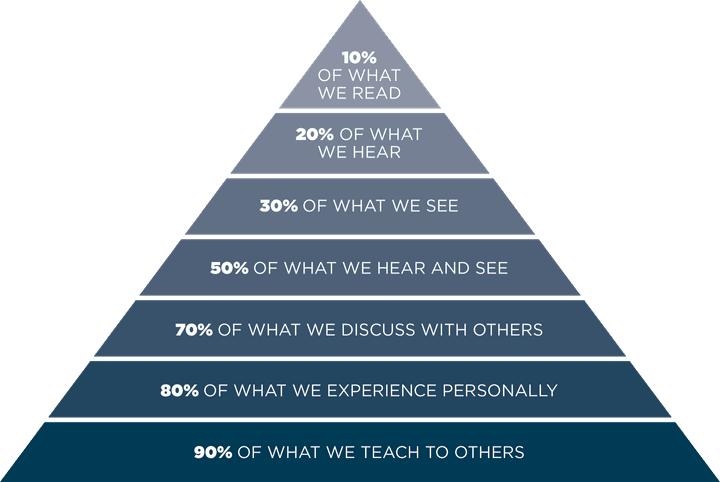According to a report by the Project Management Institute, the number one reason projects fail is poor communication. In fact, PMI states that poor communication is a contributing factor in 56% of the projects that failed. Consider these all-too-familiar scenarios:
- You’re in a project meeting with business and technical teams, and it feels like everyone is speaking a different language. This results in confusion about goals, requirements, and a path forward.
- A technical team is demoing a new software, and the business team responds that the solution doesn’t meet their actual needs, causing rifts between the business team and IT.
- Steering Committee sessions span multiple functions and teams, but too many voices are in the rooms, generating a swirl and a lack of clear direction.
These scenarios demonstrate how misaligned stakeholders can cause delays in decision-making and resource wastage, ultimately leading to diminished project success rates and hindering organizational objectives and portfolio performance.
The truth is that stakeholder groups and individuals across your organization will have different needs, ways of working, and communication styles. Your role as a project leader is to effectively guide these groups to complete projects aligned with organizational goals and stakeholders’ expectations.
To prevent the above scenarios, we’ve developed ten “Art of Translation” principles that consider stakeholder differences and enable cohesive collaboration.
Related Content: Assessing Change Maturity
# The Art of Translation
Having guided and managed countless projects with companies of varying sizes and industries, we’ve learned how to approach projects successfully. Our “Art of Translation” approach integrates change management principles with emotional intelligence (EQ). This unique approach builds alignment across all stakeholder levels by validating project end goals early and often and providing strategies to keep true to the project's north star throughout the process.
By applying this methodology, project leaders can augment their project management plans with change management and emotionally intelligent leadership skills. This will boost communication skills, improve stakeholder engagement and alignment, and prevent unproductive spin and out-of-sync project deliverables.
Our Translator Approach can be distilled into ten core principles you can incorporate throughout the project lifecycle.
- Utilizing Emotional Intelligence
- Understanding Stakeholders and Their Motivations
- Ensuring All Voices Are Heard and Acknowledged
- Active Listening
- Alignment Validation
- Clear Communication of Goals, Expectations, and Timelines
- Use of Visualization Tools to Build Alignment and Agreement
- Transparency with Sponsor to Help Remove Roadblocks
- Be Curious and Always Learning
- Building a Collaborative Culture

Let’s examine four key areas where communication breakdowns occur and how you can apply these principles to propel the team forward.
# Key Area 1: Identify the red flags that business and technical teams are lost in translation early.
In complex projects, it’s not unusual to deal with large stakeholder groups, each with their priorities and underlying assumptions about which steps matter most — a recipe for misunderstandings. It’s crucial to ensure that all parties are clear on the goals of your current project and how they tie into the organization’s larger strategy. How do we go about doing this?
- Principles: Validating Alignment, Practice Active Listening
- Importance: Identifying the disconnect between stakeholders early on allows for pivots to be made with minimal impacts on budget, timeline, and goodwill capital needed to get a project across the finish line
- Warning Signs: Disengaged stakeholders who hold their tongue or don’t speak during meetings. This tends to occur in the team-forming stage.
# Applying the Art of Translation Principles:
Validating alignment isn’t a fixed, one-time activity but instead a practice of aligning outputs to agreed-upon goals and values instead of personal preference or seasonal fluctuations.
Validating alignment can be:
- Scheduling and Committing to Check-ins: The real challenge with this task is maintaining the meeting series, as meetings get canceled or fall off so that “project” work can be done. While both are needed, a lack of a consistent meeting series leads to stakeholder misalignment and leaves the project vulnerable to setbacks.
- Documenting Roles and Responsibilities: When everyone on the working team knows the decision-makers and proper escalation channels if they are at an impasse, the team is set up for success in more challenging environments.
Before entering the triage stage, leverage your listening skills to identify needed support. This can go a long way in navigating project setbacks and team disconnects. Active listening can be defined as moving “beyond simply hearing the words that another person speaks but also seeking to understand the meaning and intent behind them.”
Active listening involves:
- Paying close attention to what is being said and expressed (verbal and body language)
- Seeking clarification when needed, even for seemingly simple questions
- Repackaging and sharing back the speaker's message to ensure that the intent or plan of action is understood across the team
- For more complex situations, encourage stakeholders to go beyond sharing their answers and instead inquire about their rationale so that their motivations and assumptions can naturally surface.
# Key Area 2: Use powerful questions to coach stakeholders when project goals don't seem clear to all parties.
As a project manager, leading people informally can be the norm. Often, you are not the manager of those involved in executing the work, and it can be a delicate balance of influence through trust, effective and persuasive communication, and formal authority granted by the project sponsor. Getting keyed into the motivators of your stakeholders can help a project manager develop the best strategies for engagement and hitting the right note in communication. Here are some tactics you can use to dive deeper and uncover motivations.
- Principles: Utilize Emotional Intelligence (EQ), Understand Stakeholders & Motivations
- Importance: Gaining alignment and understanding through inquiry is an important tool in any coach's toolkit and can be an invaluable skill for Project managers to adopt. Marcia Reynolds, a leading PsyD, Master Certified Coach, and the author of the best-selling book “The Discomfort Zone,” delves into “how the latest brain science shows why reflective inquiry works and provides techniques, tips, and structures for creating breakthrough conversations." This exemplifies how powerful questions can be crucial in stopping the spin of conversations where no one is truly listening to one another.
- Warning Signs: Meetings seem to spin around the same discussions.
# Applying the Art of Translation Principles:
By starting with EQ, you can begin to know yourself before you turn that outwards to influence the emotions of others. This can be done by understanding the following:
- What you can control:
- Your thoughts
- How you speak to yourself
- How you speak to others
- How you react to triggers, traumas, and others' displayed emotions and words
By truly knowing yourself and being honest about your strengths, weaknesses, and opportunities, you can start working on yourself before working on others. When you first identify your motivations, it becomes easier to understand your audience's motivations, enabling you to ask the right questions.
- Motivations of self and others:
- What are the drivers behind this emotion, reaction, or attitude?
- What are the values being displayed?
- Are there any triggers to this behavior? Is validation required to continue the discussion?
These questions will help you understand what drives your sponsor, stakeholders, or organization and help you select the most appropriate communication, leadership, presentation, and training tactics to guide your projects to success.


# Key Area 3: Recognize when to bring in other stakeholders to ensure the right people are present for the right conversations.
When was the last time you evaluated your meeting cadences? Unchecked, meeting hygiene tends to decline steadily. Some professionals err on the side of including any stakeholder who has been involved, even peripherally, while others can get cancel-happy, shrinking down meeting lists and leading to them eventually falling off the calendars altogether. This creates an environment where people aren’t having necessary conversations.
- Principles: Be Curious and Always Learning, Build a Collaborative Culture
- Importance: To be an effective project leader, you must understand the current landscape and be willing to explore new solutions that better meet the project's end goal. Crowdsourcing your internal knowledge with your team can result in corrective action to rescue or better align outputs with the organization’s goal.
- Warning Signs: At the execution stage of a project, there's a consistent lack of accountability for missed deadlines or unseen requirements, delayed decision-making, or constant syncing with outside stakeholders.
# Applying the Art of Translation Principles:
To ensure successful project outcomes, having the right people involved in the right conversations is crucial. However, this means you need to challenge the status quo and explore if there are better ways to approach meetings and engage stakeholders. If you view a meeting environment and its participants as fixed, you limit its potential for success. Instead, embrace ambiguity and focus on understanding the project’s goals within the existing parameters. Doing so allows you to evaluate and develop a process that aligns with these goals and leads to project success.
Have you ever been in a situation where you're managing a project, and one stakeholder insists that they can't proceed until another group provides information while the other is making the same claim? Even if you update the project plan's milestones to reflect this disconnect and allow more time to resolve the issue, the project's overall health may still decline. To mitigate this, it's important to leverage the expertise of your project team, from strategic sponsors to tactical team members, and look beyond the scope of delivery.
Common course-correcting activities can include:
- Meeting Hygiene Calls: Review all project meetings with relevant team members to align on each call's objectives, audience, and outputs. This can be done quarterly or semi-annually, but it invites team members to realign desired outcomes with the current strategy.
- Utilize Scheduling Tools: Simple things like marking essential participants as required and others as optional allow for increased visibility and flexibility. Similarly, when conversations require a deep dive into a certain topic, a shared agenda with a request for certain team members is a great workaround to keep project team members informed.
- Leveraging Sponsors for Timely Decision-Making: Sponsors have a host of levers they can pull when facing project setbacks, such as making an executive decision on who can continue the work, escalating issues that are out of the scope of the project team (e.g., funding issues), or promoting the value of this work across the organization enabling quicker pivots as it relates to team structure.
# Key Area 4: Pinpoint the learning styles of your audience to ensure business needs are articulated into technical requirements.
A collaborative work culture is crucial in teams because it ensures that people speak at the right altitudes. As a project progresses, it is easy for individual contributors to lose sight of the vision and end goal. A collaborative culture means that teams know WHY they're doing the work that they're doing and ensure their efforts drive the vision of the project, not just the line items in planning software. Using visual tools to help your team see while they hear and say at the same time they write will help them retain information to build alignment and agreement.
- Principles: Build a Collaborative Culture, Use Visualization Tools, Ensure All Voices Are Heard & Acknowledged
- Importance: Using visual tools is a crucial way to help everyone align on the main points, plans, gaps, risks, and possible paths forward. It’s through this experimentation that you learn your stakeholder’s learning styles. It’s a little like the game we play as children called broken telephone, where each time something was said from one person to the next, the message could change minutely or even drastically. By the time it got to the last person, the message was often unrecognizable. According to Edgar Dale's Cone of Experience, the percentage of information we retain can be summarized by the wisdom that people remember. (Thalheimer, 2015)
- Warning Signs: Conversations in meetings or group discussions feel like they’re going in circles. Is everyone pretty much saying the same thing or want the project to succeed, but you can't find a path forward?

# Applying the Art of Translation Principles:
There are several ways that you can adapt your approach to be more inclusive. One method that is typically very engaging is getting visual with a group. This can be done in various ways based on the type of meeting you are holding and can serve several purposes that are outlined below.
- Everyday Meetings: During regular meetings, you can use tools like OneNote, Google Docs, or Word to take notes live. This way, all parties can view the captured points and then participate in a Q&A session or use real-time chat to suggest any changes or corrections. Alternatively, you can use a prepared parking lot to create time and space for everyone to get on board and speak the same language.
- For brainstorming, problem-solving, or decision-making sessions, several tools can be used, such as Miro, Mural, Google Whiteboard, MS Whiteboard, Stormboard, Tricider, and even in-person whiteboards. These tools provide a platform for reviewing questions or problems and allowing participants to populate their answers. This makes it easier to facilitate the session by giving time to categorize answers based on similarities, highlight gaps, risks, or disagreements, and discuss the pros and cons. In turn, this helps to reach a consensus on what was agreed upon and determine the path forward.
- When conducting workshops to present information, gather business requirements or CTAs (Call to Action), there are several tools that can be used to create an engaging and collaborative environment. These tools include PowerPoint, interactive polls such as Mentimeter or Poll Everywhere, templates in Word and Excel, and Ideaboardz. By presenting information in an interactive and engaging way, workshops can help with the dissemination or validation of information, clarify expectations for next steps, and control Q&A through icebreakers and conversation starters. These interactive components are also useful for building engagement.
# Conclusion
Every project involves people. There are those who will come up with strategies and execute the necessary changes, and those who will ultimately be the end-users. Flexing their collective power is crucial for the project's success. To manage, lead, and execute projects successfully, it is important to master leveraging emotional intelligence and change management core competencies. This will enable you to level up your abilities.
By using the "Art of Translation 10 Principles," you can develop a frame of mind that encourages continuous learning, curiosity, and a growth mindset. This framework is designed to help you build positive and collaborative environments while enhancing your project leadership capabilities. It is an essential toolkit to elevate your project leadership skills.





